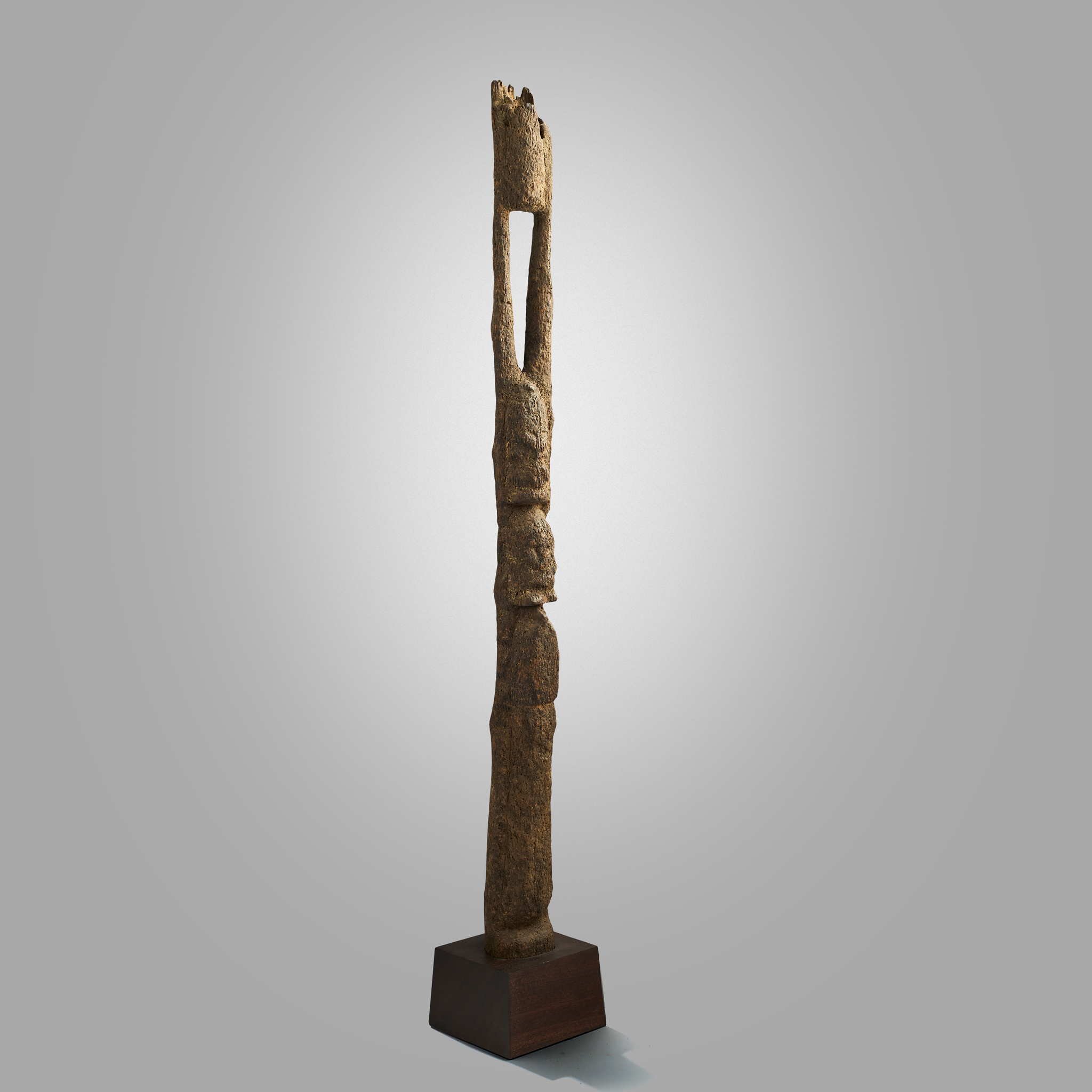DOGON TELLEM SHRINE FIGURE
MALI, 17TH - 18TH CENTURY
Estimate: £2,500 - £3,500
Auction: 13 March 2025 from 13:00 GMT
Description
carved wood, long slender figure shown with arms raised, deep patination, set on a bespoke mount
Dimensions
94cm high
Provenance
Otto Hultén (1916–2015), Malmo, Sweden
Hultén was a Swedish modernist painter and one of the pioneers of abstract art in Sweden. Known for his experimentation with surrealism and non-figurative forms, he often incorporated natural and industrial materials into his work. Hultén was also a founding member of the avant-garde artist group Imaginisterna, which played a significant role in shaping Swedish post-war art.
Footnote
The Dogon people are primarily found in the Bandiagara Escarpment in Mali, West Africa. The Bandiagara rises dramatically from the Sahel, its rugged sandstone cliffs interspersed with ancient caves. The Dogon first arrived in the area around the 14th century, where they encountered the Tellem people, who had been settled in the region for centuries. Known for their cave dwellings and agricultural practices, the Tellem were similar to the Dogon, but as the latter established their presence, they gradually displaced the Tellem. Interactions between the two groups were complex, involving both conflict and cultural & artistic exchange.
The gesture seen in the present example, of raised arms, is an archetype of art from the Bandiagara region, dating first to the time of the Tellem and subsequently continued by the Dogon. Such statues were found all along the cliffs and caves of the region. It is believed that these figures played a role in rainmaking rites, with the pose an invocation to the required deities.

